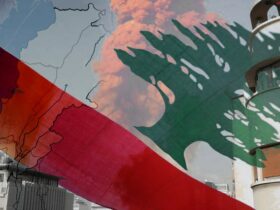By Recep Erçin / Economics journalist
After two major earthquakes in Kahramanmaraş and Hatay, 11 provinces of Türkiye were declared disaster areas. The provinces represent 9-10 percent of Türkiye’s gross domestic product (as of 2021), according to official data. Türkiye’s national income was 7.2 trillion Turkish Lira as of 2021. According to TUIK data, the contribution of provinces to 2021 growth is 0.95 percentage points and 0.53 points in 2020. Türkiye grew 11.35 percent in 2021 and 1.94 percent in 2020. When the metropoles were closed down in 2020 due to the COVID pandemic, these provinces, where production continued, made a strong contribution to national income growth.
The budget deficit will increase
According to the data of the Turkish Exporters Assembly (TIM), in 2020 these provinces exporteed goods worth 14 billion dollars, more than $19.5 billion in 2021 and more than $20 billion in 2022. This is around 9 percent of the general export volume. The total employment in the provinces is in the range of 4-5 million, providing nearly 16 percent of the total employment in the country. Although the post-earthquake research suggests that the damage was 80-100 billion dollars, official sources consider these numbers as exaggerated.
The national income data for 2022 has not been announced by TUIK yet. However, when we look at the last four years as of the third quarter of 2022, we can speak about a gross domestic product of approximately 850 billion dollars. 10% of this is 84 billion dollars. Of course, not all 11 cities have collapsed. Especially Hatay, Kahramanmaraş and Adıyaman were heavily damaged. It would be an erroneous inference to withdraw all 84 billion dollars from the national income. However, the size of the expenditures to be made for the heavy destruction in three provinces and the reconstruction of 11 provinces is estimated to be at least 40 billion dollars.
Türkiye ran a budget deficit of 139.1 billion liras in 2022. Since 2023 is the election year, a higher budget deficit was expected. It is known that this budget deficit will increase even more after the disaster. Estimates for this are that the ratio of the budget deficit to national income will rise to the level of 5 percent in the next three years.
Factories are intact, but workers are missing
The indirect contribution of these provinces to the country’s exports and national income is much higher than the direct contribution we have mentioned above. Even if all the businesses in the region are put into operation quickly and the logistics problems are resolved, it will not be possible to operate the facilities at the old speed due to the lost workforce. Although undamaged businesses will reach their normal operating speeds with April at best, the next three months will not be very comfortable due to lost orders and decreased productivity. Besides, according to what we learned from the region, European suppliers intend to shift some of their orders to Türkiye in order for the businesses to recover quickly, and they already declare this to their interlocutors.
The region is the main base of strategic investments for some sectors, especially steel cookware and textile raw materials. The information that there were no major breaks in these production bases was conveyed by the sources. The Zones of Organized Industry are in working condition. But in small industry the problem is big.
Without small industry and without solving the housing problem of the workers, it is impossible for production to return to the state it was before the earthquake. This will happen in the medium term. In the short term, we expect the capacities to reach acceptable levels in 6-9 months. At this stage, containers and tents are being set up around many facilities for shelter. In cities where there is less destruction and in enterprises where there is no destruction, production is started slowly. But even at the best half of the workers are willing to work.
What are the expectations?
It was known that the first six months of 2023 would not be very productive in terms of exports due to the global stagnation. The World Bank’s 2023 growth forecast for Türkiye was 2.7 percent. The economy grew by 7.5 percent in the first quarter, 7.7 percent in the second quarter and 3.9 percent in the third quarter last year. Betam’s forecast for fourth-quarter growth is 3.1 percent. There is a slowing in the economic outlook.
The slowdown in exports brought on by the global recession had already put the 5% growth predicted for 2023 in the Medium Term Program (MTP), published in September, at risk. With the new Credit Guarantee Fund (KGF) loan package that was put into use in January, it was desired to accelerate the growth until the elections. The earthquake crushed all expectations.
As it stands, we expect the growth, which is already expected to be moderate in the first half of the year, to evolve into a recession with the effect of the earthquake. February and March have already been written off for the region and associated cities. It is possible that April and June will be a period of slow recovery. Of course, it would be correct to ignore the region for six months in terms of debts to the financial sector and budget revenues to be given up.
Exchange policy may be pressured
The bottoming out of the economic activity of 11 provinces, which represent 9-10 percent of the national income directly, or more than half that, at best, with the multiplier effect, will keep the country’s growth, which is expected to be low in the first two quarters, close to the recession zone.
Failure to recover exports in provinces for a while will also cause a decrease in overall exports. It is too early to talk about the second half of 2023. Economist Atilla Yeşilada said, “Projections made with simple arithmetic calculations based on the economic output of the region on the economic cost of the earthquake were in a very narrow band: approximately 2 points are quit from GDP annually in the 2nd and 3rd quarters, but the rebuilding activity compensates for this in the last quarter.”
Our main concern is on the currency front. There is a fragile situation there. It is attempted to override the impossible triad with an unconventional policy set. We call this the tight market exchange regime in the narrow area. There are cracks in the dam holding the currency flood. New patches are made as needed. The economic effects of the earthquake can make it difficult for these patches to retain water.
I would like to express my condolences to our country.

















Leave a Reply